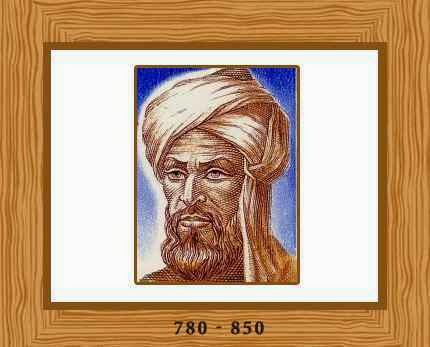 |
| Image Source: Kevtak Algebra Readiness Classroom and Homework page |
This reminds me of a student in one of my first math classes I taught at the high school level - Algebra 1 - stating emphatically he "didn't need math to be a mechanic." A visit to the web page for UTI, and that "troubleshooting" and electronic technology involves a considerable amount of math managed to refocus him successfully (the Pre-Calculus class was a bit older, and concentrated on graduating - I didn't need to do much "pep-talking").
A little history for perspective: we use it to balance chemical equations; the first high school physics you'll ever learn before you run into Calculus will be based on this foundation.
 |
| Image source: Famous Scientists |
Muhammad al-Khwarizmi
Baghdad in the 9th century was a global center of culture and trade, a hub connecting India and China with the Mediterranean and Europe. It was a rich city, a center of learning, and scholars from all over the world would come to study at the House of Wisdom, a renowned library and academy where Muhammad al-Khwarizmi lived as a scholar.
Ideas traveled in consort with commerce along the roads of Baghdad, and al-Khwarizmi embodied the wide range of the city's global vision. The Muslim scholar expanded upon the work of Greco-Roman astronomers such as Ptolemy, created one of the oldest surviving treatises on the Jewish calendar and employed and popularized the Hindu number system of 1, 2, 3... (which, because of al-Khwarizmi's work, we now refer to as the Hindu-Arabic numeration).
But his most influential work dealt with methods to solve complete equations. In "The Compendious Book on Calculation by Completion and Balancing," al-Khwarizmi demonstrated how to simplify equations by adding or subtracting an identical quantity from both sides. For example, adding 4x to each side of 6x = 40 - 4x reveals that 10x = 40. This "act of completion" - al-jabr - gave mathematicians a new tool: algebra.
From Time, Special Editions: Great Scientists - The Geniuses, Eccentrics and Visionaries Who Transformed Our World, Mathematics, page 21.

Comments